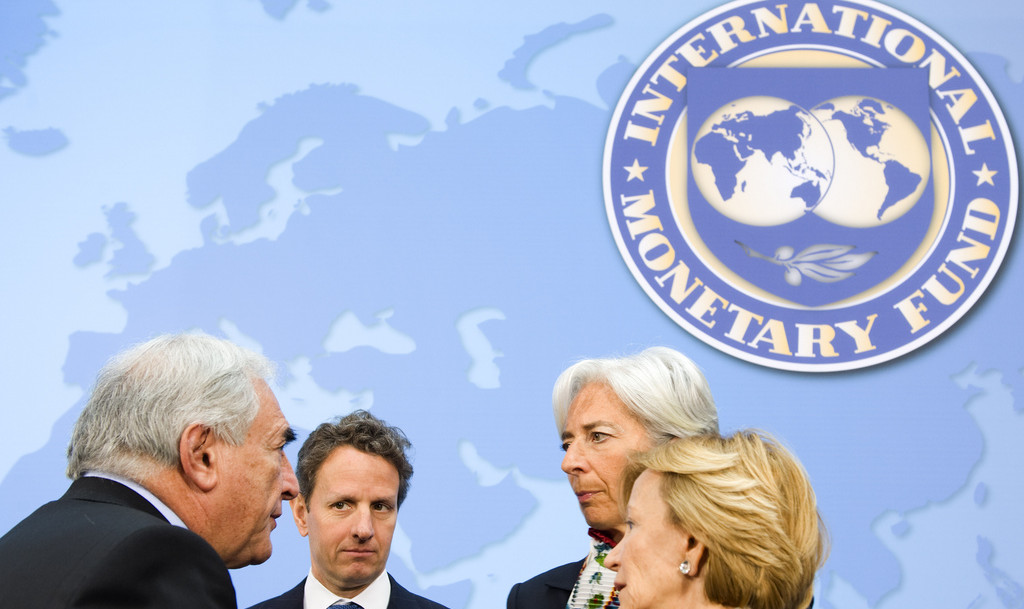It was among the ravages of world war that the brain child of John Maynard Keynes and Harry Dexter White came into being. Seventy years ago at Bretton-Woods, 45 nations created the International Monetary Fund in the hopes of repairing and re-integrating a global economic system that had long been in tatters. It functioned for many years as one of the cornerstones of the post-war system in which the dollar-gold exchange system reigned supreme. After the Nixon era, and until very recently, the IMF was often considered a key leg of the famed “Washington Consensus,” the set of neo-liberal mores and institutions that ruled the developmental landscape for much of the past thirty years. Much of this began to turn in the 2000s as the Fund struggled to stay relevant and legitimate in a world with an ever-changing economic center of gravity.
The sovereign-debt crisis and subsequent (and ongoing) actions in Europe have brought a renewed vigor and sense of purpose to an institution that has long been static. Since 2010, the fund, a key part of Europe’s troika that includes the European Central Bank and the European Commission, has committed nearly 83 billion Euros to debt-ridden European nations. Now, five years since the onset of economic crisis, it would do well to examine some recent changes at the IMF, both proposed and enacted, and the role the United States plays in these changes.
The IMF voting system, designed around quotas that nations pay into the Fund, is perhaps the most outwardly “unfair” aspect of the fund’s structure. However, it has also proved to be one of the easiest characteristic to change – and changes have indeed been forthcoming in this regard. After a set of 2008 and 2010 reforms go into effect, China will rise to third, behind the United States and Japan, in terms of vote share percentage. Developing countries, participating in IMF voting via a representative coalition system, will also see their votes increase by a total share of 6%. Such a change might be marginal, but it nonetheless represents a desire to bring less developed countries into the fold, as does the decision to move two directorships from Europe to Africa. After the 2010 reforms are instituted, the ten largest shareholders in the Fund will be the United States, Japan, the EU4 (France, Germany, the U.K., and Italy) and, perhaps most importantly, the BRIC nations. These 2010 reforms, however, have yet to be put in place. The United States, still holding a controlling share of votes, has blocked the passage of the measures; Republicans in Congress have refused to vote on the reforms.
In addition to the voting structure, talk in recent years has also centered around the IMF’s unique reserve assets, Special Drawing Rights. The sheer quantity of foreign exchange reserves held by China is staggering, and 3.4 trillion of those reserves are held in American dollars. Such reserve accumulation is the result of years of beneficial balance of payment surpluses. But China will have a tough time sterilizing forever, and their holding of dollars will quickly become a liability should the currency cease to be the flight to quality that it is now. It’s no wonder, then, that some Chinese policymakers have proposed to establish the SDR as the world’s primary reserve currency. Since their creation, SDRs have really only ever been utilized as a unit of account for the IMF, and this change is distinctly unlikely in the near future. Nonetheless, it raises long term questions about the role of the IMF in the face of massive global imbalances and potential shifts in what we define as key currencies. Recent attention on the SDR is a symptom (or a result, at least) of a changing economic landscape in which the U.S. plays a pivotal role.
Perhaps the biggest change has been an ideological one. A shift in thought that began under former managing director Dominique Strauss-Kahn before his untimely ouster has continued under his successor Christine Lagarde. The IMF has long been regarded as the world’s foremost pusher of austerity, a notion for which they have been severely, and often fairly, criticized; crises in Latin America and in East Asia exposed the fallibility of IMF policies. 2008, though, seemed to bring about a change in the fund’s one-size-fits-all prescriptions. Perhaps it’s hypocritical or too little too late, but in regards to Greece and elsewhere in Europe the fund has walked back on its austerity measures, albeit sometimes in veiled terms as in their 2013 World Economic Outlook.
The IMF 2013 is not the IMF of 1980, 1990, or even 2000. Reforms have been coming to an institution that sorely needed them, if only to stay solvent. Yet these changes still represent only a beginning, not an end goal in of themselves, as is true of the many other institutional changes enacted around the world after 2008. The fund will need to continue shaping their reforms around robust emerging nations.
